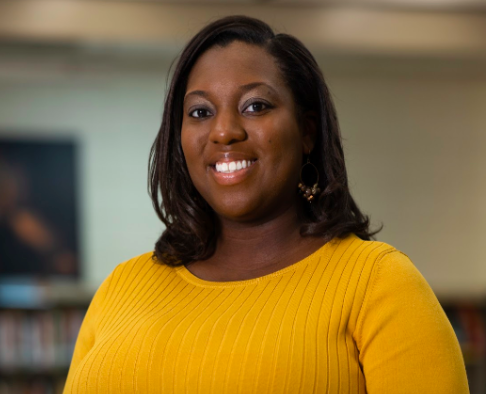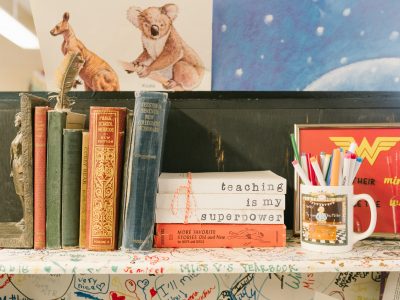By: Elizabeth McCauley McDonald, Manning High School Social Studies Teacher
Students A and B are in 11th grade. Student A reads at a 9th grade level and Student B at a 7th grade level. Student A has internet access at home and has transitioned to e-learning. Student A experiences some challenges understanding the work; however, they are able to attend virtual meetings with the teacher to get additional help. Student B does not have a reliable internet connection at home, so Student B’s parents go to the school and pick up a packet, so that their child can continue to learn. Student B opens the packets and begins to…
Right now in South Carolina, and America as a whole, middle and high school students are forced by circumstances to become their own teacher.
Some students are even teachers to their younger siblings. In many homes, parents of elementary students are able to support their child’s learning, but that is not always the case for students in middle and high school. Fortunately for some middle and high school students, they have access to reliable internet and can attend Zoom meetings with their teachers, email teachers, or even look up tutorials or videos explaining content. But notice that I said some students. The reality is that many middle and high school students do not have that luxury.
During this time the inequities of our school systems are laid bare.
Some folks are content pretending that everything is alright and the children will be just fine, but what if they aren’t?
Many schools have switched to an e-learning platform to provide instruction and instructional materials for their students. But what about students that do not have access to these platforms?
Many students are faced with the reality of these teacher created packets we see folks talk about on personal and school district social media pages.
So, what’s in the packets?

Well, it varies from district to district, school to school and sometimes teacher to teacher. There is one commonality found in most packets – reading activities. The goal of the reading activities seems to be for students to review and/or learn new content.
For science students, packets may include articles related to the field of science or secondary source material explaining science content. For history students, packets may include primary source documents, like letters or journals for analysis, or secondary source materials discussing content students need to review or learn. Math packets may include word problems allowing students to make real world connections to math concepts. English packets may include short stories or opportunities for students to engage writing with various prompts.
For some students these types of activities are manageable. So, let’s talk about why these types of activities are manageable for those students. Well, if you’re like me, you teach content area literacy strategies in your classroom. We read daily in my class and use literacy strategies when we read. On my board when you walk in my classroom, you’ll always see a section titled, “Daily Reading Moment.”
Many teachers are engaging in literacy practices in their classrooms. Teachers have students activate prior knowledge before reading texts, utilize activities while reading to increase student comprehension, and utilize activities after reading to assess comprehension. Many teachers focus on building vocabulary for students to be successful readers. Many classrooms across our state are classrooms where students are learning the literacy skills they need to tackle texts in the absence of their teacher.
I’m a social studies teacher, but I am a firm believer that literacy is everybody’s business, but unfortunately not all educators feel the same. Some folks feel as though it’s the job of English or Language Arts teachers to teach reading and literacy skills. And, maybe these teachers have been able to get by with that mentality for a while, but what about now, when teachers expect students to read and learn information from packets?
Let’s talk about access
Let’s go back to Student B that we read about in the beginning of this post. What happens when Student B attempts to read the various materials in the packet, but lacks the reading skills and vocabulary knowledge to be successful? What happens when Student B comes face to paper with this touted packet, but has never read in the safe space of the classroom from which this assignment hails?
What do we do now?
I know you care about your students and you want the best for them. The way for students to get the best is for teachers to give their best selves.
Here is my charge for all of the educators across our state:

- Invest in your own professional development, during this time of self-distancing, to strengthen your implementation of literacy practices in your classroom.
- Expand your repertoires of practice to include literacy strategies that will empower your students with the tools they need to deconstruct texts and gain meaning.
- Enroll in a class about content area literacy.
- Do a Google or YouTube search and learn about various literacy practices and literacy strategies.
- Read the research. There are many research articles about best practices.
- Reach out to folks that you know deliver professional development around content area reading strategies.
My charge for educators knowledgeable in content literacy strategies:
If you have delivered professional development in content area reading and writing strategies, deliver a virtual professional development for your colleagues.
This is a call I will also need to answer. Why should we wait until our various summer academies to learn with and from our colleagues?
Will you join me?

In South Carolina, we know one of our biggest mountains to climb in education is increasing student literacy. We also know that our greatest tools we have to climb that mountain are the educators in South Carolina classrooms. When we enter our classrooms again, will you be a part of the change? Will you help us climb the mountain? Let’s do the work…together!
If something of this magnitude happens again, we do not want to leave our students to fend for themselves. Instead, we want to leave our students with the knowledge and practices necessary to take ownership of their learning.
About the Author

Elizabeth McCauley McDonald is a high school social studies teacher in Manning, South Carolina, where she served as District Teacher of the Year for 2018-2019. She holds a Bachelor’s in Secondary Social Studies from Clemson University, a Masters in Education from Anderson University and a Masters in Educational Administration from the University of South Carolina. Elizabeth is currently pursuing a PhD. in Literacy, Language and Culture at Clemson University. Elizabeth also edits blogs for LiD.
If you are a South Carolina educator, complete this survey developed by LiD to learn more about the literacy teaching and learning in secondary classrooms in our state. (Link).
